We had the unique opportunity to visit Chilldyne’s headquarters in California and take an in-depth look at their groundbreaking technology and fascinating company history. Chilldyne, in its current form, emerged thanks to funding from the ARPA-E COOLERCHIPS program but boasts roots in the aerospace industry, specifically rocket science. The company holds multiple patents related to rocket engine design, focusing on keeping hot rocket nozzles cool and optimizing fuel system delivery. Interestingly, the Chilldyne Cooling Distribution Units (CDU’s) design is based on their rocket fuel pump technology. Their lab facility is a nerd paradise, existing at the intersection of rocket engineering, chemistry, and mad science.
The ARPA-E COOLERCHIPS (Cooling Operations Optimized for Leaps in Energy, Reliability, and Carbon Hyperefficiency in Information Processing Systems) program is an initiative by the Advanced Research Projects Agency-Energy (ARPA-E) to improve data center energy efficiency. The program focuses on developing advanced cooling technologies to reduce energy consumption and increase the reliability of data centers. By promoting innovations in cooling systems, COOLERCHIPS aims to address the growing energy demands of data centers, enhance their operational performance, and minimize their carbon footprint.
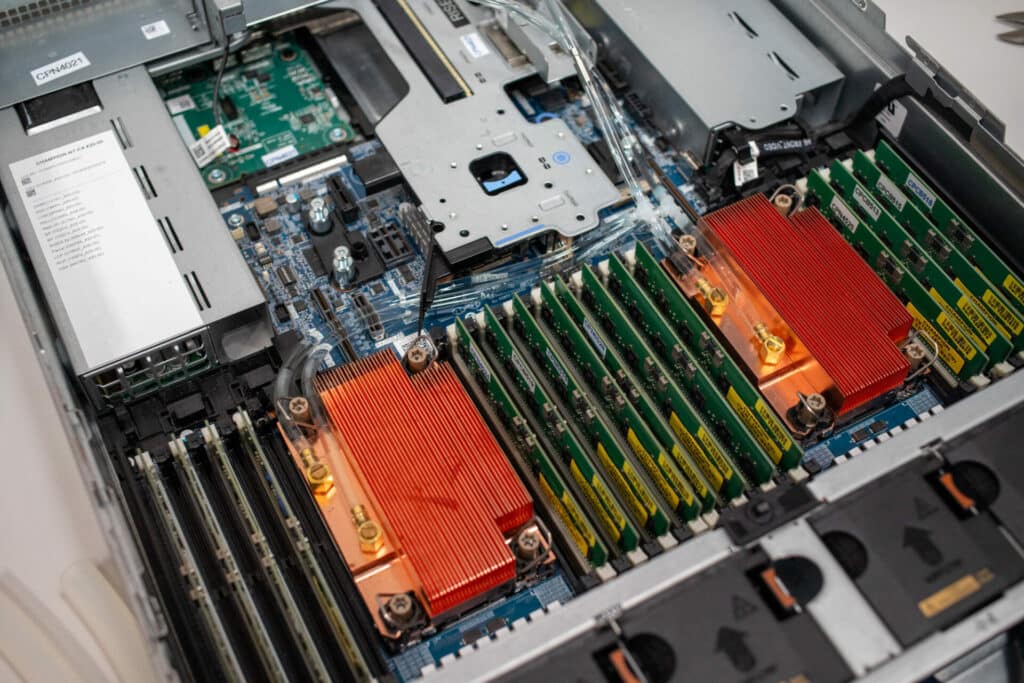
Rocket Science, in the Data Center
High-density AI and HPC workloads drive power consumption that results in excessive heat in data centers, making them difficult to manage with air cooling. With liquid-cooling a requirement for the latest NVIDIA GB200 Superchips and even 8-way socketed GPU deployments going that direction, organizations must embrace new technologies to support their AI goals. But bringing in liquid cooling isn’t always easy, and there’s the perpetual fear of a system leaking. Chilldyne, however, has a different approach.
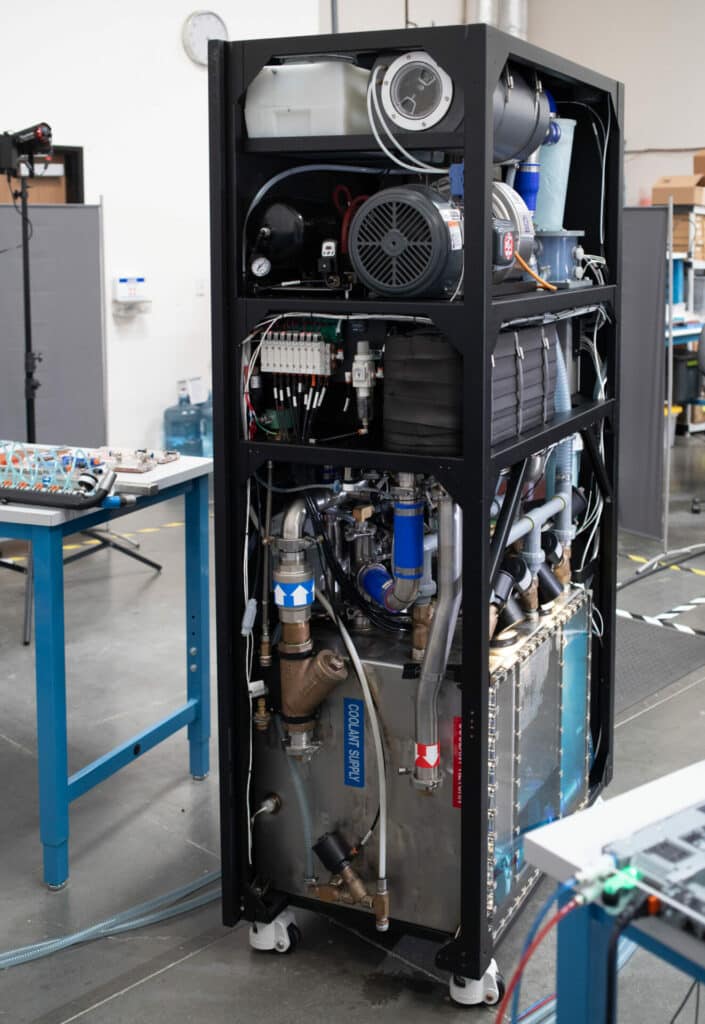
When Being Negative is a Huge Positive
Chilldyne’s solutions address the number one fear when bringing liquid cooling into the data center: leaks. It utilizes negative pressure technology to prevent leaks, ensuring maximum uptime and reliability by circulating coolant in a vacuum. This method eliminates the need for heavy-duty plumbing. It provides superior thermal efficiency, making Chilldyne’s systems highly effective for maintaining optimal performance in modern data centers while reducing energy consumption and carbon emissions.
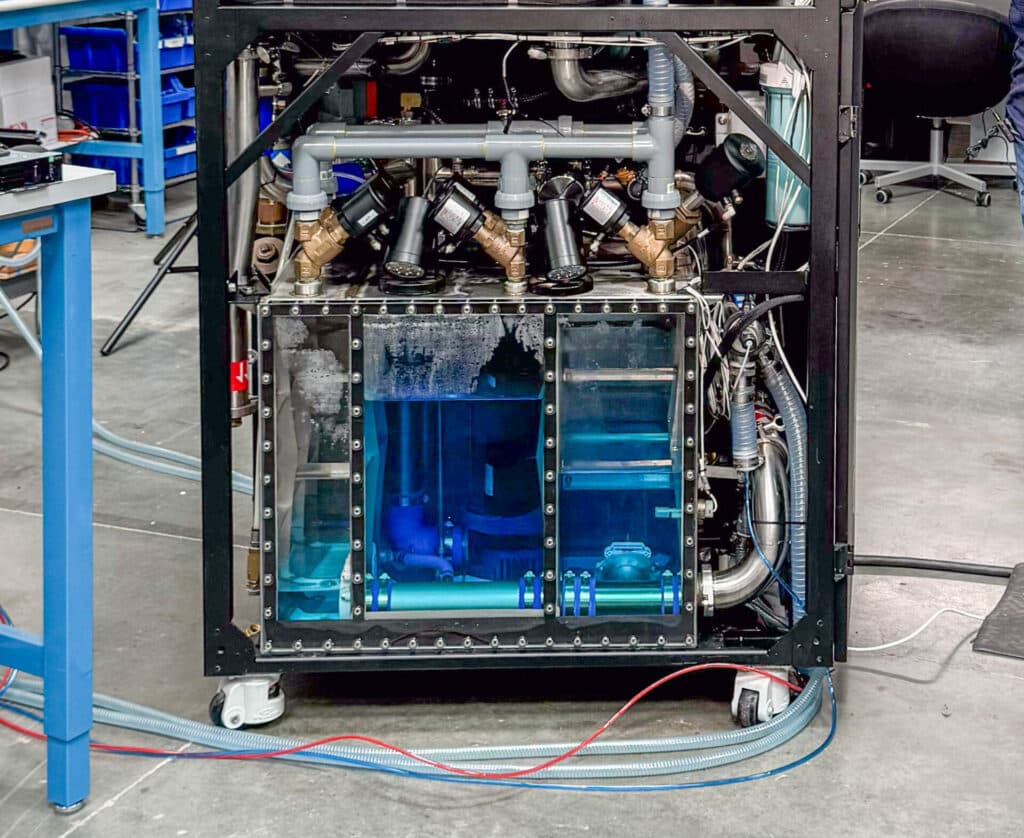
The entire pump mechanism operates using a differential vacuum. Take the above image as a reference. There are three chambers: two outer chambers with a “high” vacuum and a central chamber with a “low” vacuum. These vacuum levels are precisely controlled by valves at the top of the chambers.
The coolant is drawn from the central reservoir chamber through the cooling loop. It returns to one of the outer high-vacuum chambers after passing through a heat exchanger connected to facility chillers. Once the outer chamber is full, the vacuum on that side is turned off and applied to the opposite side, allowing the coolant to flow back into the central chamber. This process is managed by adjusting which valves are open on the high-vacuum chambers.
One of the fascinating advantages of operating a negative-pressure liquid loop design is the ability to run thinner tubing and even forego the need for tuning clamps. With a positive-pressure system, the tubing is always fighting the system’s pressure across every inch of surface area.
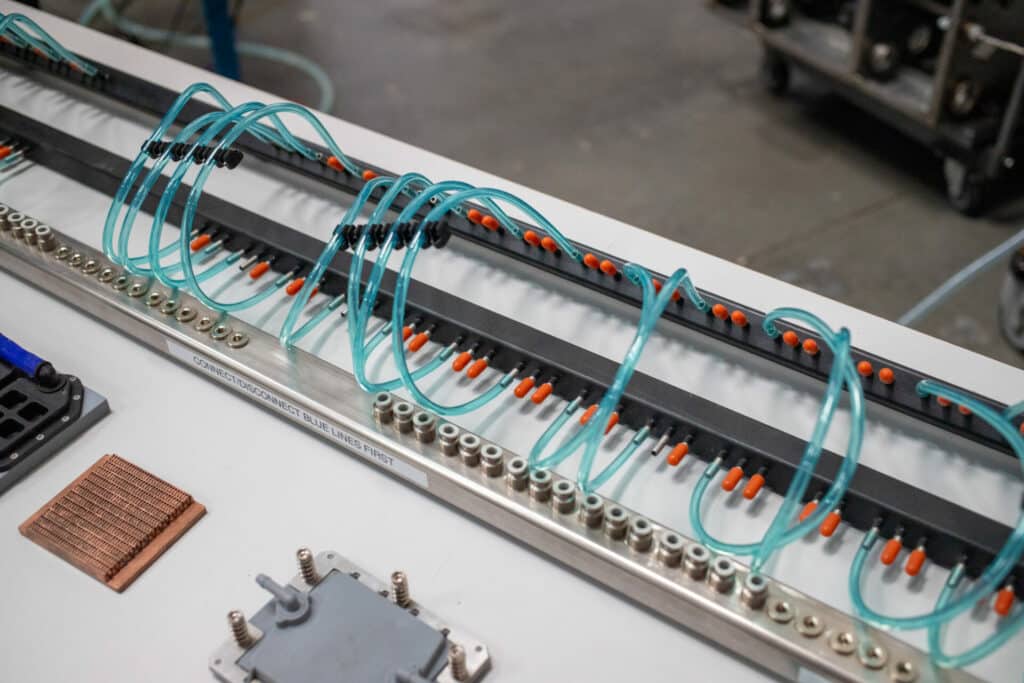
Positive pressure systems require clamping to prevent leaks as the pressure works to push the tubing off the connection. The opposite is true in a negative pressure loop like Chilldyne’s. The tubing can be very thin (inexpensive), and connections can be basic fittings or no fittings at all, as the negative pressure constantly pulls the tubing into a snugger position. Connections will form tighter fittings as time passes, forcing a better seal as the system ages.
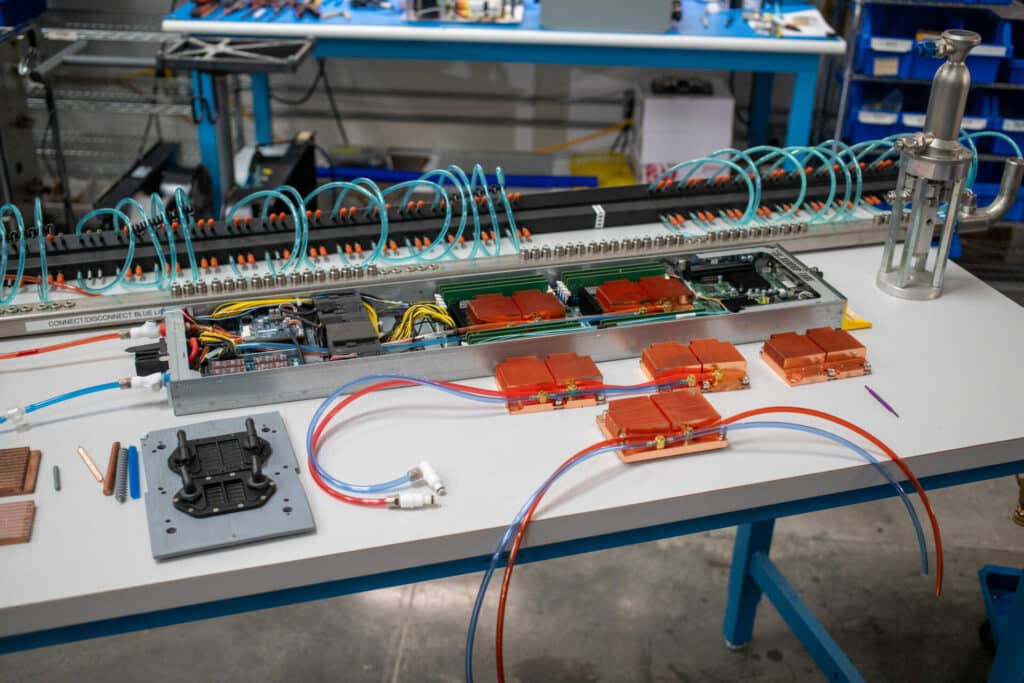
The practical advantage of the tubing size can’t be overlooked. Many of the positive pressure systems we’ve looked at have chassis loops that are significant in size. The Chilldyne negative pressure tubing is closer in size to thin 1GbE network cabling.
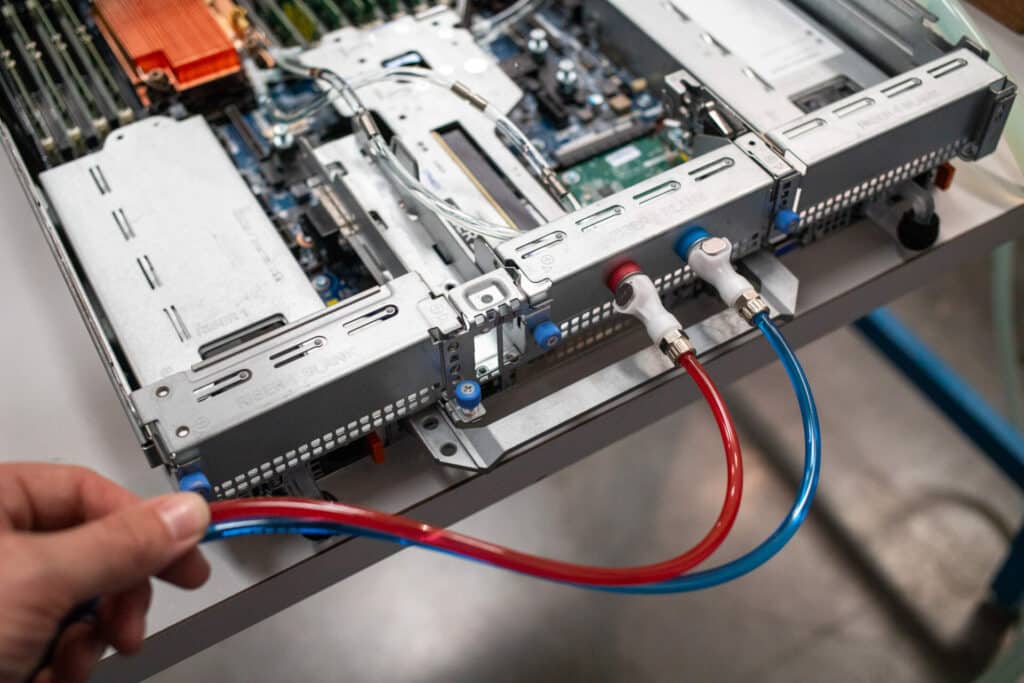
Cold Plates and The Turbulators – Not an Indie Band Name
A cold plate is a crucial component in liquid cooling systems, and it’s designed to dissipate heat directly from high-power components, such as CPUs, GPUs, and even switches. It is mounted directly on the heat-generating component, absorbing heat and transferring it to a circulating coolant.
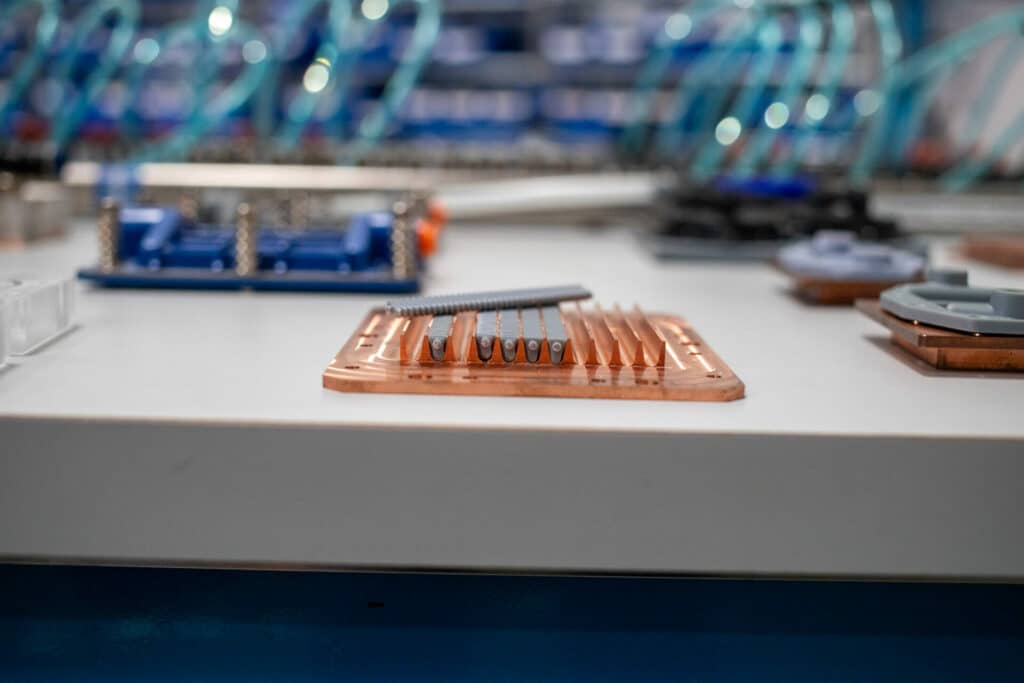
The coolant, water in this case, flows through the cold plate’s internal channels, carrying the heat away from the component. This process ensures efficient cooling, maintaining optimal operating temperatures and improving the performance and reliability of electronic devices.
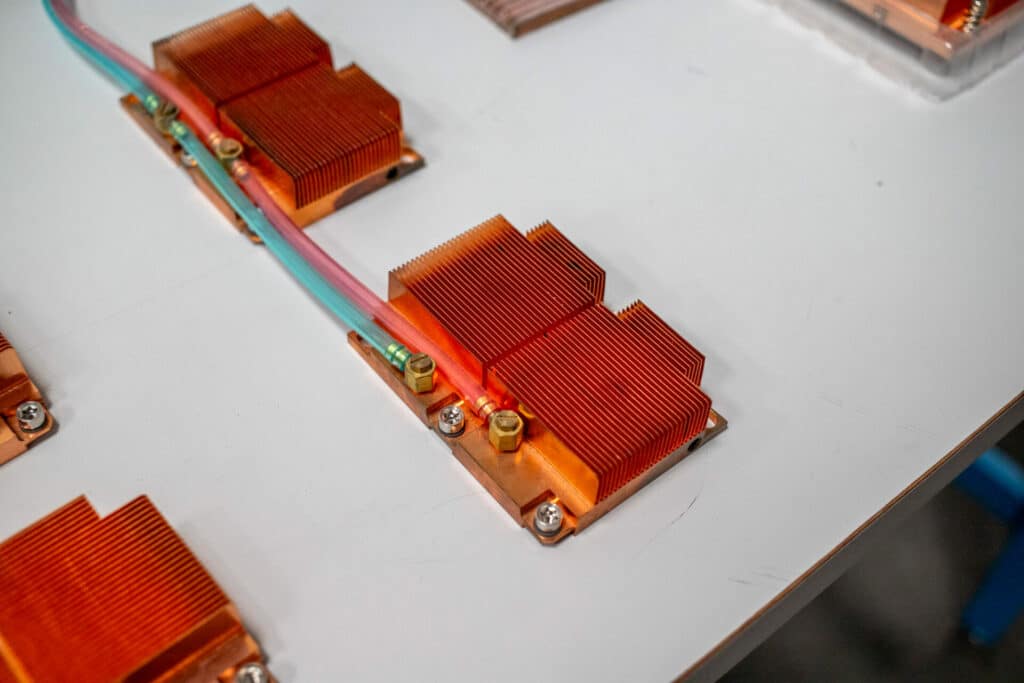
A unique design element of the Chilldyne cold plates we haven’t seen from other vendors is their ability to remain air-cooled with specific designs. Fins are still an option, depending on your cooler model, which offers two benefits.
The first obvious benefit is that the system can remain operational if a line is cut or moved, with the fans in the system chassis ramping up as the CPU warms up. The second benefit of the hybrid heatsink design is that it stays cool from the liquid passing through it and can draw in additional heat from the ambient environment, further lowering the overall system exhaust temperatures.
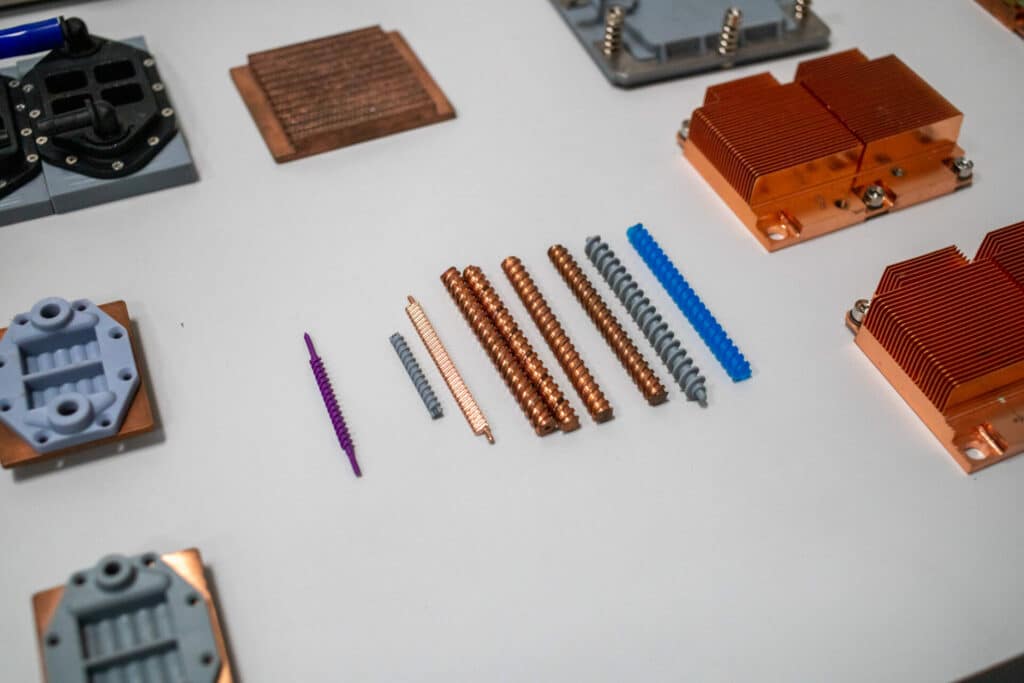
The magic inside the Chilldyne cold plate design happens at the turbulator. Those corkscrew-looking pieces force the water around the channels inside the cold plate, giving the liquid enough time and surface area to draw the heat out of the metal into the liquid. Turbulators are found in many homes if you have a gas furnace. They are commonly located inside the secondary heat exchanger, allowing the furnace to reach its high-efficiency rating. They swirl the combustion air, extracting as much heat as possible before directing the exhaust gas outside your home.
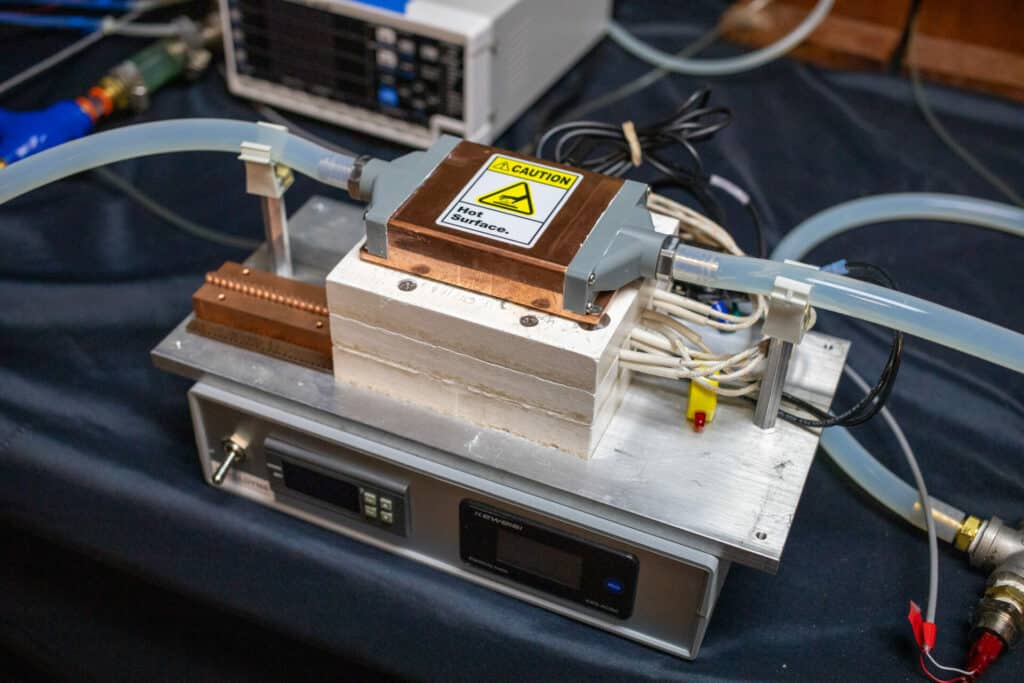
Chilldyne plans to support a wide range of emerging power-hungry devices, with cold plates designed for 2000W devices currently in development. The concept product demonstration illustrated it can efficiently dissipate high thermal loads into the liquid loop.
Does Your Data Center Have a Chemist?
Probably not, and with Chilldyne doing the hard work here, customers don’t have to either. Any liquid loop requires additives to keep the water clean over time; the last thing a liquid loop wants is anything growing or corrosive in the system that could gum up the cold plates, dropping their efficiency.
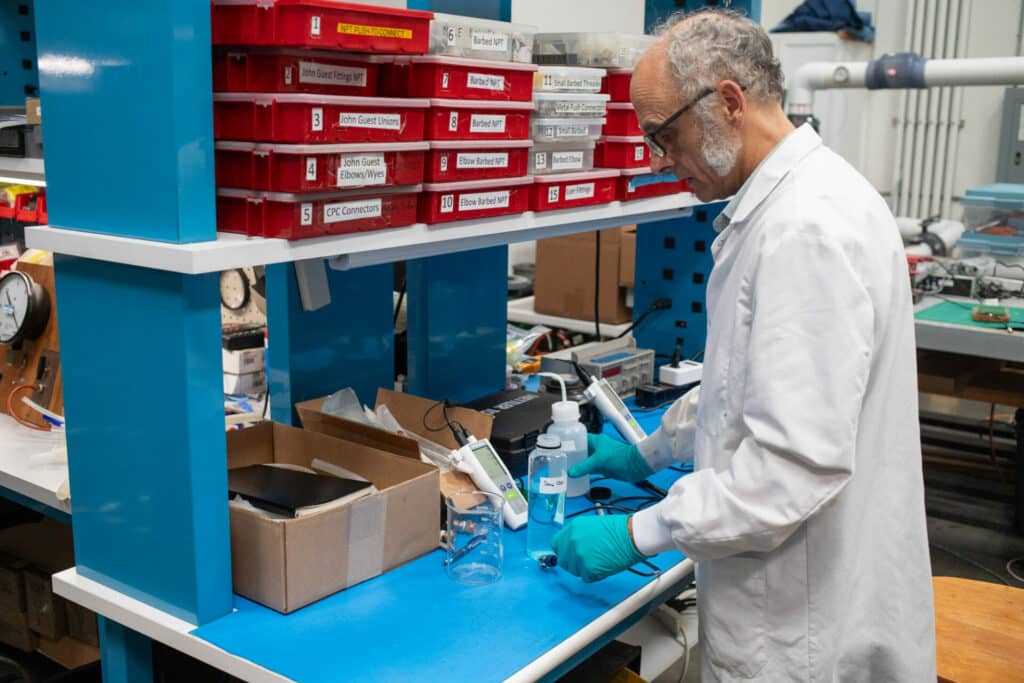
The Chilldyne CDUs operate with local facility water that is filtered and treated on demand. This is a considerable advantage compared to Glcyol-based coolants, which require special care during filling or disposal. The Chilldyne CDU monitors the liquid on an ongoing basis, keeping it treated with anti-microbial as well as anti-corrosive chemicals. The CDU can dump its entire coolant loop on demand into the sewer and refill it if monitoring detects a severe enough issue. With chemicals measuring in the parts per million, the CDU water waste can go down the drain.
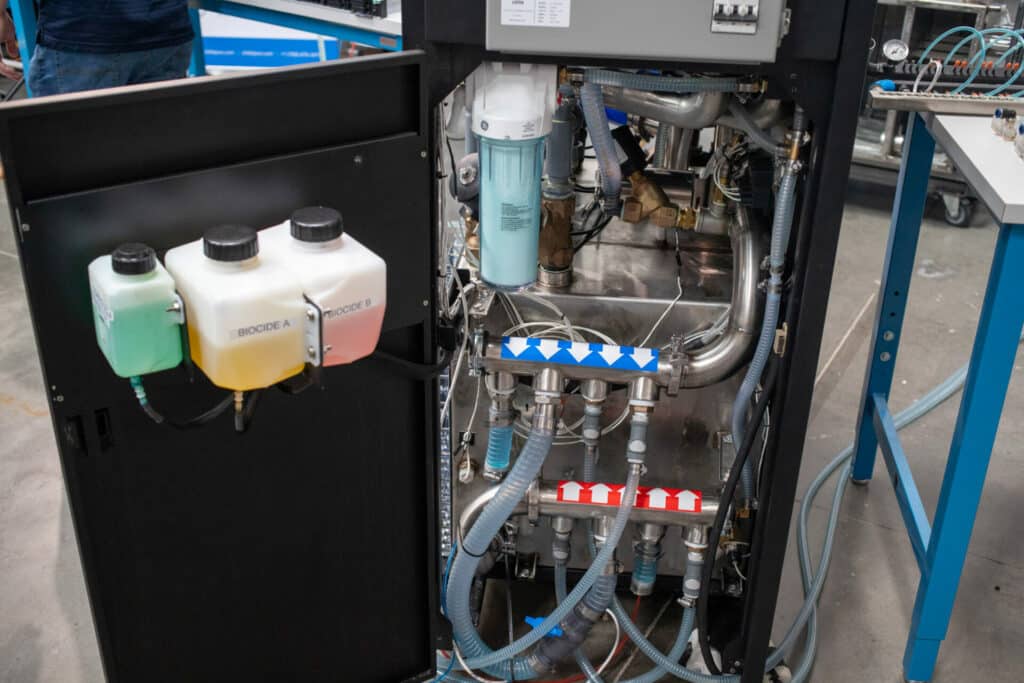
Another impressive benefit is that Chilldyne ships dry to where it will be deployed. You hook up facility water, and then an automated process adds and balances the chemicals of the solution to the local biome. The biome covers situations where facility piping might have unique metallurgy or where facility water introduces unique microbiology. Different bacteria require a different approach, and Chilldyne can balance those situations. For unique cases where something gets out of balance, end-users can ship Chilldyne a sample of the CDU water to see where things got out of balance for a more customized approach.
Start Small, with Redundancy
With any liquid-cooling solution, the most common question we hear after concerns about leaking is how to get started cost-effectively and with minimal disruption. Chilldyne recently launched its starter kit to address this concern. The Liquid Cooling Starter Kit includes two CF-CDU300 Cooling Distribution Units, cold plates, and automatic switchover valves that protect against either CDU failing.
Dr. Steve Harrington, CEO of Chilldyne, says this offering addresses key customer concerns: “We are excited to introduce our data center liquid cooling starter kit to the market. Our goal is to develop real, practical liquid cooling solutions that address the growing challenges faced by HPC and colocation data center operators in the era of artificial intelligence. By offering a Liquid Cooling Starter Kit capable of supporting high-density racks, we are confident that we can help our customers achieve their goals of increased efficiency, sustainability, and reliability.”
Conclusion
Chilldyne’s novel design focuses on critical aspects of data center cooling, emphasizing reliability and efficiency. Downtime in data centers can be catastrophic, leading to significant financial losses and operational disruptions. Chilldyne addresses this with its negative pressure technology, ensuring leak-proof operations and maintaining continuous uptime for a data center’s most expensive assets. Their cold plates are engineered for high performance, supporting up to 2000-watt chips and incorporating an advanced turbulator design for optimal heat dissipation. Additionally, for those unsure of how or where to start, Chilldyne’s Liquid Cooling Starter Kit simplifies the adoption of liquid cooling, making it accessible and cost-effective for data centers.
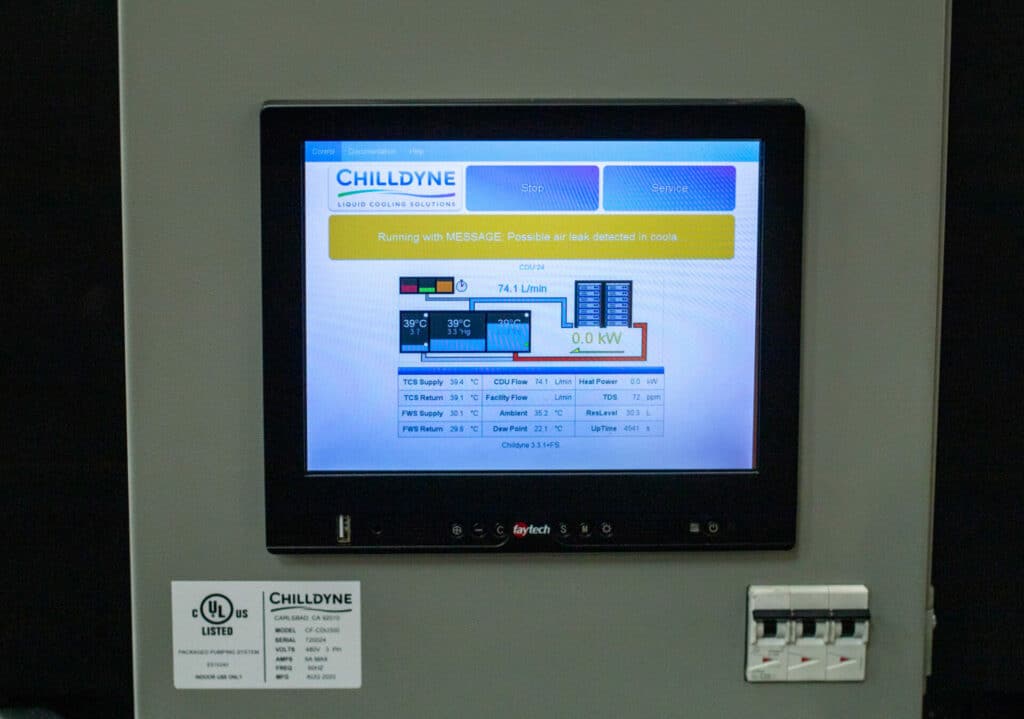
For the uninitiated, the idea of bringing in liquid cooling to the data center can be intimidating. The benefits are undeniable, though; the efficiency gains provided by full liquid loops are demonstrable. For any organization looking at the latest and greatest chips like NVIDIA GB200, liquid will be the ONLY option to cool them. While we can discuss the benefits of Chilldyne’s CDU solution, cold plate design, ease of setup, safety of the water and additives used, and even The Chemist, organizations adopting liquid cooling stay awake over one key issue: what happens if it leaks? With Chilldyne, that fear is entirely mitigated; there’s nothing like it commercially available in the industry. We suppose that’s the result when you gather a group of rocket scientists, ambitious ARPA-E goals, and an industry that shows no signs of slowing when it comes to engineering power-hungry chips.




 Amazon
Amazon